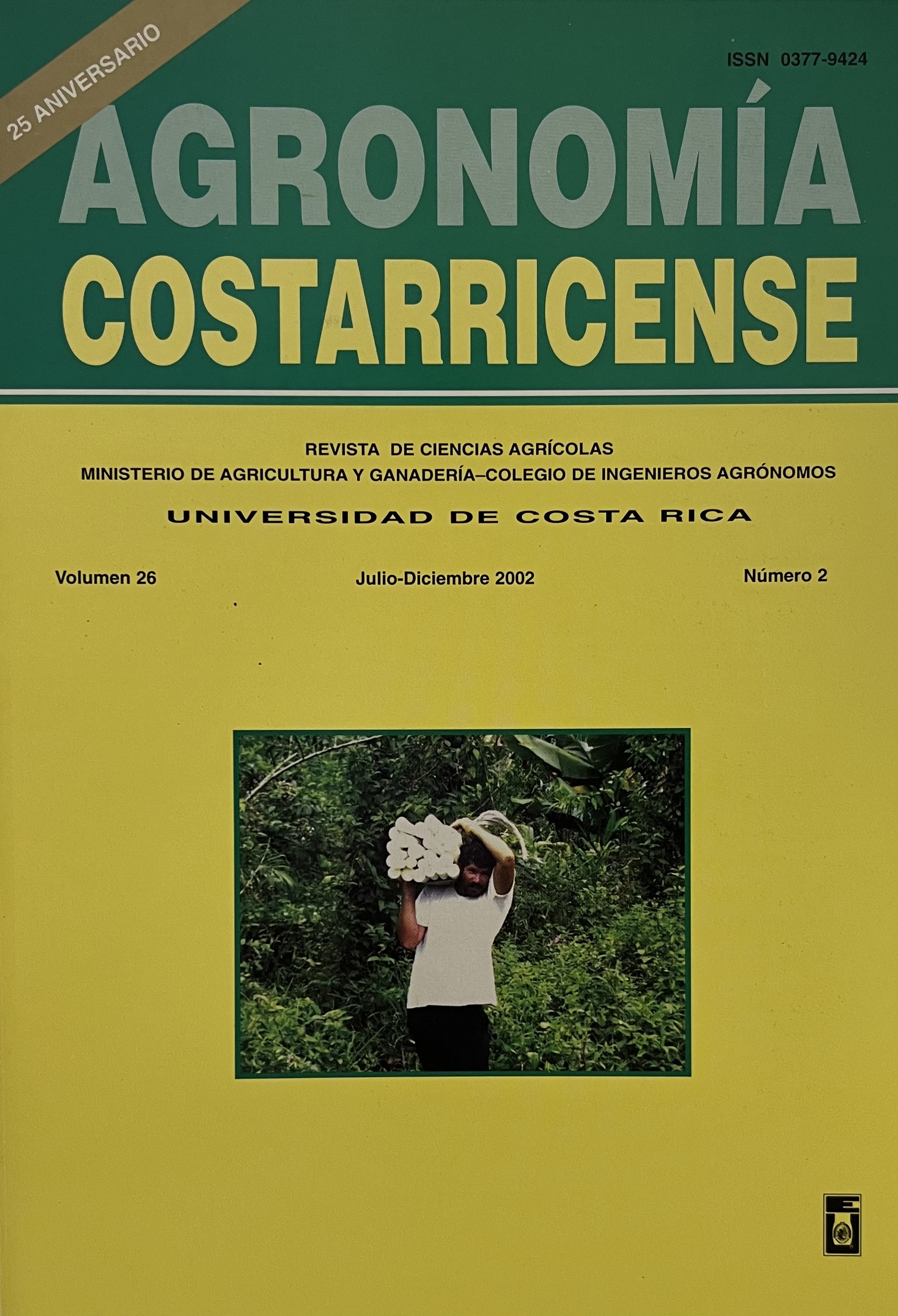Abstract
The peach palm (Bactris gasipaes) cropping system for heart-of- palm production is characterized by relatively low nutrient exports from the field and a considerable amount of plant residue left on the ground as mulch. The objective of this study was to gain an understanding of peach palm foliage residue decomposition and nutrient release patterns under high and low rainfall periods in a mature peach palm plantation at Guápiles, Costa Rica. The study was conducted on a Typic Hapludands, in a 16-year commercial peach palm stand. Residue decomposition and nutrient release were monitored during 2 high rainfall seasonal periods (starting in July and September 1998) and a dryer season between February and April 1999. The third leaf, of the 5 leaves cut during harvest of the stem portion, was air-dried and placed in 1-mm mesh nylon bags. Bags were placed on the soil surface and retrieved at 1, 2, 4, 8, 16, 24, 32, 40, and 48 weeks. Percentage of the original residue dry weight and nutrients remaining were regressed on time. Initial N residue concentrations over the 3 placement periods ranged from 24.2 to 28.1 g kg-1, cellulose from 251 to 325 g kg-1, and lignin from 80 to 104 g kg-1. The residue decomposition rate was 0,15% week-1, while nutrient release rates ranged from 0,03 to 0,30% week-1. The general order of nutrient release was N=K>P>Mg>Ca. When the equations describing nutrient release were applied to nutrient accumulation values from 4 and 8-year-old peach palm stands from a paper of Molina et al. (2001), the potentially available nutrient pools on an annual basis ranged from 93 to 107 kg ha-1 of N, 14 to 15 kg ha-1 of P, 90 to 116 kg ha-1 of K,19 to 23 kg ha-1 of Ca, and 13 to 14 kg ha-1 of Mg. The relatively fast decomposition and nutrient release rates would seem to be ideal for this perennial cropping system, where nutrient demand in a heart-of- palm plantation occurs at a relatively constant rate during the year.
##plugins.facebook.comentarios##

This work is licensed under a Creative Commons Attribution-NonCommercial-NoDerivatives 4.0 International License.
Copyright (c) 2024 Agronomía Costarricense


